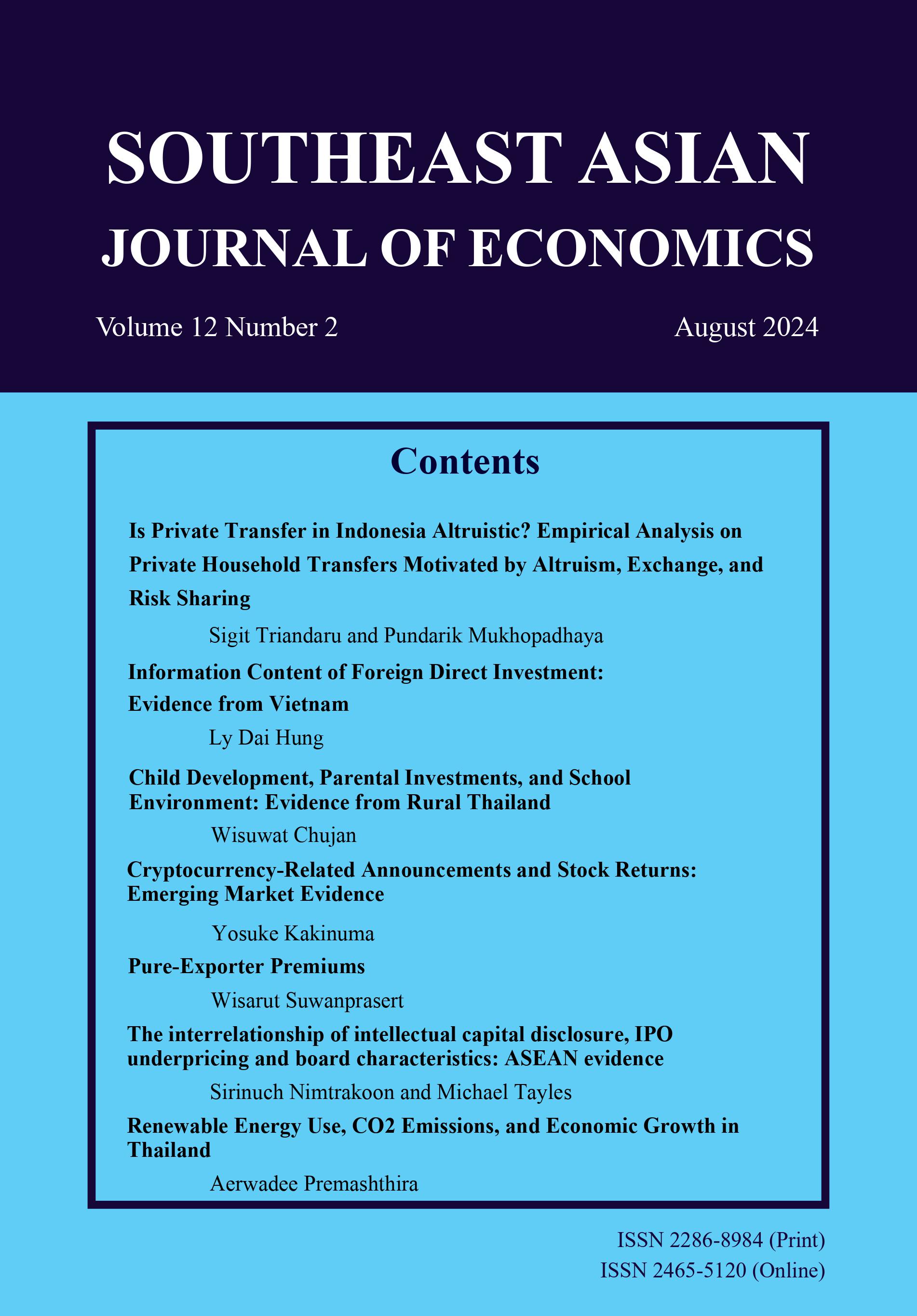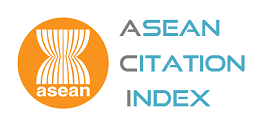Information Content of Foreign Direct Investment: Evidence from Vietnam
Keywords:
Foreign Direct Investment, Economic Growth, Vector Autoregression Model, VietnamAbstract
This study decomposes the foreign direct investment (FDI) into registered and disbursed values. The difference between the two values reflects the absorption capacity of an economy toward foreign capital flows. Over a quarterly sample from Q1/2007 to Q1/2023 in the Vietnamese economy, the vector autoregressive model with time-varying coefficients (TVC-VAR) is employed to capture the potential changing macroeconomic regime. The evidence suggests that the disbursed FDI has a greater connection with macroeconomic fundamentals, while the registered FDI is more effective in forecasting the value of fundamental variables. Thus, the information content of registered FDI is different from that of disbursed FDI, and this result should be accounted for in both academic research and public policy design. As an implication, the disbursed FDI is more suitable for investigating the macroeconomic impact of FDI capital inflows, while the registered FDI is more useful as an indicator of future macroeconomic dynamics.
References
Badinger, H. (2009). Globalization, the output–inflation tradeoff and inflation. European Economic Review, 53(8), 888-907.
Ball, L., Mankiw, N. G., Romer, D., Akerlof, G. A., Rose, A., Yellen, J., & Sims, C. A. (1988). The new Keynesian economics and the output-inflation trade-off. Brookings Papers on Economic Activity, 1988(1), 1-82.
Behera, J., & Mishra, A. K. (2017). The recent inflation crisis and long-run economic growth in India: An empirical survey of threshold level of inflation. South Asian Journal of Macroeconomics and Public Finance, 6(1), 105-132.
Blanchard, O. J., & Quah, D. (1989). The Dynamic Effects of Aggregate Demand and Supply Disturbances. The American Economic Review, 79(4), 655-673.
Cogley, T., & Sargent, T. J. (2001). Evolving post-World War II US inflation dynamics. NBER Macroeconomics Annual, 16, 331–373.
Dvorak, T. (2005). Do domestic investors have an information advantage? Evidence from Indonesia. The Journal of Finance, 60(2), 817-839.
Gerlach, Stefan, and P. E. N. G. Wensheng. "Output gaps and inflation in Mainland China." China Economic Review 17.2 (2006): 210-225.
Gourinchas, P. O., & Rey, H. (2007). International financial adjustment. Journal of Political Economy, 115(4), 665-703.
Griffin, J. M., Nardari, F., & Stulz, R. M. (2004). Are daily cross-border equity flows pushed or pulled?. Review of Economics and Statistics, 86(3), 641-657.
Imai, Hiroyuki. "Outpu-Inflation Tradeoff in China." The Developing Economies 35.2 (1997): 111-141.
Froot, K. A., & Ramadorai, T. (2008). Institutional portfolio flows and international investments. The Review of Financial Studies, 21(2), 937-971.
Justiniano, A., Primiceri, G. E., & Tambalotti, A. (2013). Is there a trade-off between inflation and output stabilization?. American Economic Journal: Macroeconomics, 5(2), 1-31.
Lucas, R. E. (1973). Some international evidence on output-inflation tradeoffs. The American Economic Review, pp 326-334.
Primiceri, G. E. (2005). Time-varying structural vector autoregressions and monetary policy. The Review of Economic Studies, 72(3), 821-852.
Sims, C. A. (1980). Macroeconomics and reality. Econometrica, 48(1), 1-48.
Thanh, V. T., Minh, D. H., Truong, D. X., Van Thanh, H., and Quang, P. C., 2000. Exchange rate arrangement in Vietnam: Information content and policy options. Exchange, 2(2).
Tille, C., & van Wincoop, E. (2014). International capital flows under dispersed private information. Journal of International Economics, 93(1), 31-49.
Vietnam General Statistic Office (2023). Monthly Social-Economic Reports. Available online at: www.gso.gov.vn.
Downloads
Published
How to Cite
Issue
Section
Categories
License
Copyright (c) 2024 SOUTHEAST ASIAN JOURNAL OF ECONOMICS

This work is licensed under a Creative Commons Attribution-NonCommercial-NoDerivatives 4.0 International License.
The submission of a manuscript implies that the paper is an original work and has not been published elsewhere. The author(s) authorize the journal to reproduce or distribute the paper in printed or other electronic forms.







